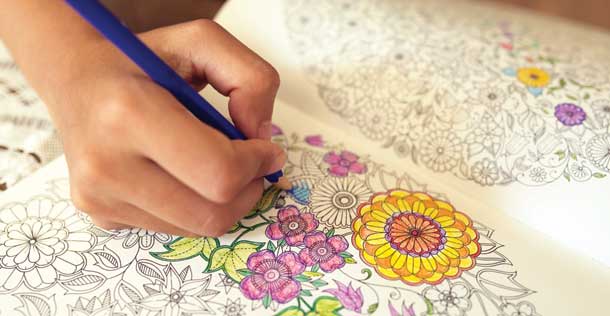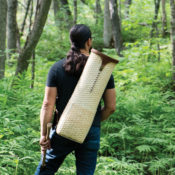If, as some say, you can judge an entire society by the way it treats its most vulnerable, then I’d argue it is equally fair to measure a nation by the way its citizens fritter away their spare time.
Lately, Americans are frittering like mad in a couple of surprising ways: on outdoor courts playing a game called pickleball, and in coloring books.
Let’s begin with the coloring books, which are meant for adults. The craze began more than a year ago. Color me skeptical, even now, but the wild enthusiasm for this hobby shows no signs of fading. Several of the books sit atop our national best-seller lists. (Johanna Basford’s Secret Garden was the first of the blockbusters, but dozens have followed.) Who, exactly, is buying these — and why?
An admission: When I heard about this fad, my initial thought was unashamedly elitist. What kind of latte-fueled exurbanite would exchange nightly yoga classes for the joylessness of coloring? Maybe someone with no life to speak of? Okay, big mistake. Huge. Turns out that adult coloring books are a raging success across nearly every shade and stratum of the American landscape, from pastures to plains to the towers of Manhattan.
Take, as an example, Maria Dorfner, a native Pennsylvanian who works as producer at ABC News in New York. “It calms and centers my mind,” Dorfner, an avid colorer, told me. “Adults need to learn to be more in the moment, like kids with crayons.”
Asked about a Psychology Today story that contended coloring cannot possibly constitute a spiritual experience, despite claims to the contrary by the hobby’s millions of evangelists, Dorfner snapped, “They’re just wrong about that.” Backing her up is a widely shared perception that coloring does indeed both soothe and heal the mind. (And let’s please agree that the illustrators of these exquisitely drawn books are artists; the color-inners are not.)
So, what we have here in our go-go digital age is an analog diversion for stressed-out grown-ups. One sits and colors and dreams, and the day’s tiny troubles appear to vanish.
At the other end of the spectrum is a (slightly) more physically demanding pastime, the game of pickleball. Imagine tennis played with wiffle balls and paddles on a diminutive court — Ping-Pong on a grander scale. The sport has rapidly attracted participants coast to coast, mainly among oldsters: The thrill of victory never flags, but the viability of older knees often does, alas.
This helps explain why pickleball, which has been around for a while, exploded in popularity only recently, as our aging population surged. The USA Pickleball Association reports it witnessed an 84 percent membership increase in the last two years alone and now boasts more than 400,000 active players. An Oregon documentarian is developing a movie about its rise.
Steve Brodsky, a 61-year-old Floridian, captured the excitement perfectly: “Pickleball is for older folks who’ve got the fire in the belly,” he told me. “Guys like me can feel, ‘Wow, I’ve still got it!’”
Hot on pickleball’s heels is a variation on that game called POP Tennis, a rebranded version of what we once knew as paddle tennis. Backed by a fresh infusion of cash from Hollywood agent Ken Lindner (Matt Lauer and Lester Holt are among his clients), the U.S. POP Tennis Association is currently rolling out a national tour. It’s aimed at picking up where pickleball leaves off. The appeal of POP Tennis, Lindner told me, is that “anyone can play, young or old. If you can walk, you can hit the ball immediately.”
What conclusions can be drawn from these trends? Well, whether we choose a pencil or a paddle, and whatever our age, Americans seldom let time go to waste. It’s in our character to be restless; it’s a trait that’s long served us well.
Become a Saturday Evening Post member and enjoy unlimited access. Subscribe now




Comments
I admire how relaxation, breathing, concentration and meditation have become important tools to balance the day-to-day. It is important to know how to deal with stress levels, stress will always be around, but is in us handle it. I am also an entrepreneur and I like to keep my mind occupied, but even more I realized this when designed a book that allowed connect my ancestral culture with activities that can cause positive effects through the use of creativity. (You can find it here:
goo.gl/zbe6Xq).
I disagree with Mr. Neuhaus’ opinion that people who color are not artist. I’ve been an artist long before I started coloring and in my opinion coloring is an art form. Look at the picture with this article and note that the person who is coloring the picture is coloring a leaf blue. The large yellow and orange flower could just have easily been colored in shades of green for a more avant-garde look. Coloring by number pictures where you put the color according to the number in the space is not art it’s coloring. But choosing each color for each space is a creative process and in my opinion is art. If you were to give the same picture to ten people and put them where they couldn’t see what the others were doing you would get ten different pictures. In my opinion saying that a person that colors isn’t an artist is like saying that a painter isn’t an artist unless that painter first draws what they going to paint. That painting freehand is not art because it’s not drawn first.
(nothing to say, at this time)